
The Church of St Mary the Virgin, widely known as St Mary Redcliffe, is the main Church of England parish church for the Redcliffe district of the city of Bristol, England. The first reference to a church on the site appears in 1158, with the present building dating from 1185 to 1872. The church is considered one of the country's finest and largest parish churches as well as an outstanding example of English Gothic architecture. The church is so large it is sometimes mistaken for Bristol Cathedral by tourists. The building has Grade I listed status, the highest possible category, by Historic England.

Reydon is a village and civil parish, 1.0 mile (1.6 km) north-west of Southwold and 2.5 miles (4.0 km) south-east of Wangford, in the East Suffolk district and the ceremonial county of Suffolk, England. Its population of 2,567 in 2001 including Easton Bavents eased up to 2,582 at the 2011 Census, and was estimated at 2,772 in 2018. The name probably means Rye Hill, Rey meaning rye and -don being an old word for hill or rise). The village is close to the cliffs at Easton Bavents, a village now much eroded. Both were established before neighbouring Southwold. The parish church is St Margaret of Antioch. The parish of Easton Bavents was merged with Reydon in 1987, when part of Southwold was also transferred.

Wrentham is a village and civil parish in the East Suffolk district, in the north-east of the English county of Suffolk. It is located about 2 miles (3.2 km) from the North Sea coast on the A12 trunk road, about 7 miles (11 km) south-west of Lowestoft, 4 miles (6.4 km) north of Southwold and 6 miles (9.7 km) south-east of Beccles.

Wangford is a village and former civil parish, now in the parish of Wangford with Henham, in the East Suffolk district, in the county of Suffolk, England, just off the A12 trunk road on the edge of the Henham Park estate just outside Southwold.
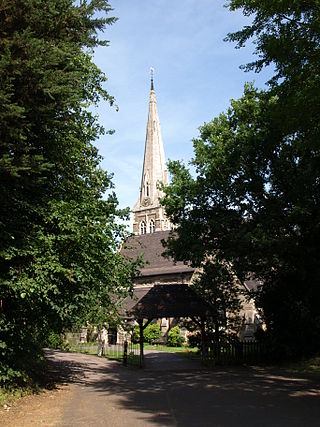
St. Mary's Church, Selly Oak is a Church of England parish church in Selly Oak, Birmingham, England.
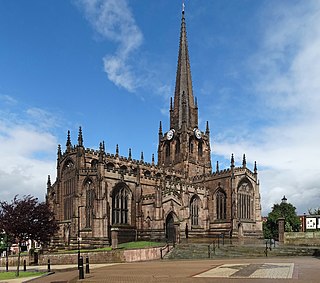
The Minster Church of All Saints or Rotherham Minster is the Anglican minster church of Rotherham, South Yorkshire, England. The Minster is a prominent example of Perpendicular Gothic architecture and various architectural historians have rated it highly. Nikolaus Pevsner describes it as "one of the largest and stateliest churches in Yorkshire", Simon Jenkins states it is "the best work in the county", and Alec Clifton-Taylor calls it the "glory of Rotherham". With its tall spire, it is Rotherham's most predominant landmark, and amongst the tallest churches in Yorkshire.

The Church of St Mary Magdalene is the Church of England parish church for the village of Ditcheat, Somerset, England. There has been a church on the site since 824, and the present building owes much of its grandeur to the Abbots of Glastonbury. Historic England have designated it a Grade I listed building.

The Church of St Peter and St Paul is the Church of England parish church for the village of South Petherton, Somerset, England. The present church is a large and imposing cruciform-shaped structure constructed on the site of an earlier Saxon Minster, with the majority of the building dating from the 13th to 15th centuries; consequently, the building is Grade I listed.

Saint Mary's Church, is the civic church for the city of Southampton, Hampshire, England. Originally founded in circa 634, St Mary's has been the mother church of Southampton since its inception. The present building, now the sixth incarnation of a church on this site, dates mostly to a rebuilding from 1954 to 1956, following its destruction in the Southampton Blitz, except for the notable Grade II listed tower and spire, which date from 1912 to 1914.
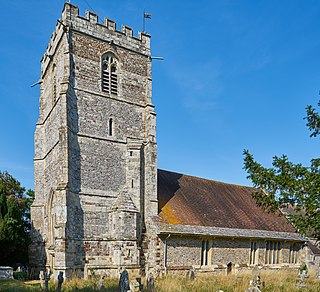
Cranborne Priory is a former priory church in the village of Cranborne, Dorset, England. Founded in 980 as Cranborne Abbey, it became a priory in 1102, remaining that way until it was dissolved in 1540. The tower, nave and aisles from the priory survive to form the Church of St Mary and St Bartholomew, the parish church of Cranborne. The building, which has fragments from the 12th century, is designated a Grade I listed building.

Preston Minster, formally the Minster Church of St John the Evangelist, is in Church Street, in the centre of Preston, Lancashire, England. From its origin it has been the parish church of Preston. It is an active Anglican church in the deanery of Preston, the archdeaconry of Lancaster and the diocese of Blackburn. Its benefice is united with that of St George, Preston. St John's is recorded in the National Heritage List for England as a designated Grade II* listed building.

St Mary's Church is the main Church of England parish church for the areas of Portsea and Fratton, both located in the city of Portsmouth, Hampshire. Standing on the oldest church site on Portsea Island, the present building, amongst the largest parish churches in the country, has been described as the "finest Victorian building in Hampshire". It is at least the third church on the site and has been designated a Grade II* listed building by Historic England. Former regular worshippers here have included Charles Dickens, Isambard Kingdom Brunel, and Cosmo Lang.
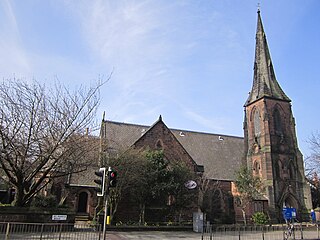
St Mary's Church is in St. Mary's Road, Grassendale, a district of Liverpool, Merseyside, England. It is an active Anglican parish church in the deanery of Liverpool South Childwall, the archdeaconry of Liverpool, and the diocese of Liverpool. The church is recorded in the National Heritage List for England as a designated Grade II listed building.

St Peter and St Paul's Church, Aldeburgh is a Grade II* listed parish church in the Church of England in Aldeburgh, Suffolk.

The Holy Trinity Church is the parish church of the village of Blythburgh in the East Suffolk district, in the county of Suffolk, England. It is part of the Church of England Halesworth deanery in the Diocese of St Edmundsbury and Ipswich, and has been listed Grade I on the National Heritage List for England since December 1966.

St Andrew's Church is a Grade I listed building in Walberswick, Suffolk. It is an active parish church in the Church of England.

St Peter and St Paul's Church, Clare is a Grade I listed parish church in the Church of England in Clare, Suffolk. It is one of the largest in East Anglia, and is included by Simon Jenkins in his 2009 book England's Thousand Best Churches, where he awards it three stars.

St Saviour's Church is in Bidston Road, Oxton, Birkenhead, Merseyside, England. It is an active Anglican parish church in the deanery of Birkenhead, the archdeaconry of Chester, and the diocese of Chester. Its benefice is united with that of St Andrew, Noctorum. The church is recorded in the National Heritage List for England as a designated Grade II* listed building.
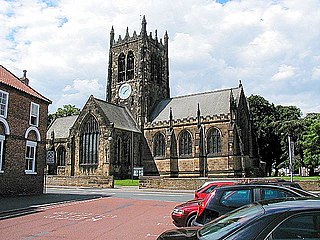
All Saints’ Church, Northallerton is a Grade I listed parish church in the Church of England in Northallerton, North Yorkshire.

The Norman Tower, also known as St James' Gate, is the detached bell tower of St Edmundsbury Cathedral, Bury St Edmunds, Suffolk. Originally constructed in the early 12th century, as the gatehouse of the vast Abbey of Bury St Edmunds, it is one of only two surviving structures of the Abbey, the other being Abbey Gate, located 150 metres to the north. The Abbey itself lies in ruins, approximately 200 metres to the east. As a virtually unaltered structure of the Romanesque age, the tower is both a Grade I listed building and a Scheduled Ancient Monument. The tower is considered amongst the finest Norman structures in East Anglia.


























